Ancient grains are a group of grains and pseudocereals (seeds that are consumed like grains) that have remained mostly unchanged for thousands of years. They’re dietary staples in many parts of the world, such as China, India, Africa, and the Middle East. Today, ancient grains are becoming more popular in Western countries. That’s because they tend to be less processed and pack more vitamins, minerals, and fiber than more widespread grains like corn, rice, and modern wheat. In addition, studies have linked ancient grain consumption to health benefits, such as lower heart disease risk, better blood sugar control, and improved digestion.
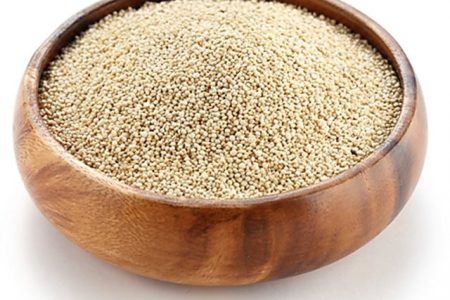
Amaranth
Amaranth is a nutritious, gluten-free grain that has been cultivated for more than 8,000 years
One cup (246 grams) of cooked amaranth contains
- Calories: 251
- Carbs: 46 grams
- Protein: 9 grams
- Fat: 4 grams
- Fiber: 5 grams — 20% of the Daily Value (DV)
- Manganese: 91% of the DV
- Magnesium: 38% of the DV
- Iron: 29% of the DV
Thanks to its impressive nutrient composition, amaranth has been linked to numerous benefits, including decreased heart disease risk and inflammation.
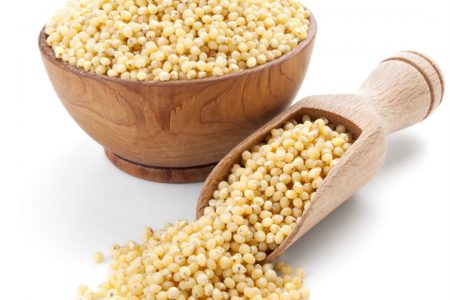
Millet
While best known as an ingredient in birdseed, millet is a nutritious, ancient pseudocereal considered a staple throughout China, India, Africa, Ethiopia, and Nigeria.
One cup (174 grams) of cooked millet boasts
- Calories: 174
- Carbs: 41 grams
- Protein: 6 grams
- Fat: 2 grams
- Fiber: 2 grams — 8% of the DV
- Manganese: 21% of the DV
- Magnesium: 19% of the DV
- Thiamine (vitamin B1): 15% of the DV
Millet contains a variety of nutrients linked to lower inflammation, reduced heart disease risk, and improved blood sugar control .
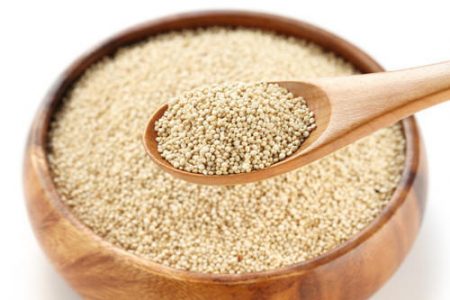
Quinoa
Quinoa is a popular, gluten-free ancient grain that offers impressive health benefits.
One cup (185 grams) of cooked quinoa boasts
- Calories: 222
- Carbs: 39 grams
- Protein: 8 grams
- Fat: 4 grams
- Fiber: 5 grams — 21% of the DV
- Manganese: 51% of the DV
- Magnesium: 28% of the DV
- Phosphorus: 23% of the DV
- Folate: 19% of the DV
- Zinc: 18% of the DV
Quinoa contains potent antioxidants, such as quercetin and kaempferol, which have been shown to have anti-inflammatory and anticancer properties in animal studies.
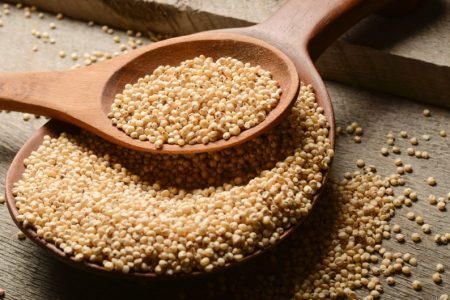
Sorghum
Sorghum is the fifth most consumed grain worldwide and a great source of nutrients
Per 3.5 ounces (100 grams), uncooked sorghum provides
- Calories: 329
- Carbs: 72 grams
- Protein: 11 grams
- Fat: 3 grams
- Fiber: 7 grams — 27% of the DV
- Manganese: 70% of the DV
- Magnesium: 39% of the DV
- Copper: 32% of the DV
- Selenium: 22% of the DV
Sorghum is not only high in nutrients but also but also a good source of powerful polyphenol plant compounds, including anthocyanins and phenolic acids, which function as antioxidants inside your body.
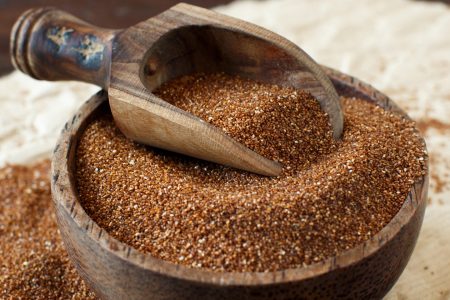
Teff
Teff is the world’s smallest grain, at approximately 0.7–1% the size of a wheat kernel. Per 3.5 ounces (100 grams), uncooked teff contains
- Calories: 367
- Carbs: 73 grams
- Protein: 13.3 grams
- Fat: 2 grams
- Fiber: 8 grams — 32% of the DV
- Manganese: 402% of the DV
- Copper: 90% of the DV
- Vitamin C: 98% of the DV
- Magnesium: 44% of the DV
- Iron: 42% of the DV
- Phosphorus: 34% of the DV
- Zinc: 33% of the DV
Although teff grains are tiny, they’re packed with important nutrients, such as iron and magnesium. They are also one of the few grains that boast vitamin C, a nutrient vital for immune and bone health.
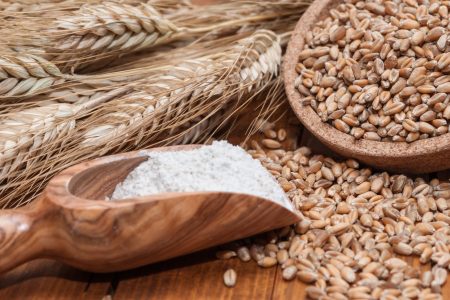
Rye
Rye is a popular ancient grain that is a member of the wheat family. However, compared to wheat, rye contains fewer carbs and more vitamins and minerals.
Per 3.5 ounces (100 grams), uncooked rye grains pack
- Calories: 338
- Carbs: 76 grams
- Protein: 10 grams
- Fat: 2 grams
- Fiber: 15 grams — 60% of the DV
- Manganese: 112% of the DV
- Copper: 41% of the DV
- Phosphorus: 27% of the DV
- Magnesium: 26% of the DV
Due to its high fiber content, rye and rye-based products may be more effective at alleviating constipation than wheat-based products and laxatives.
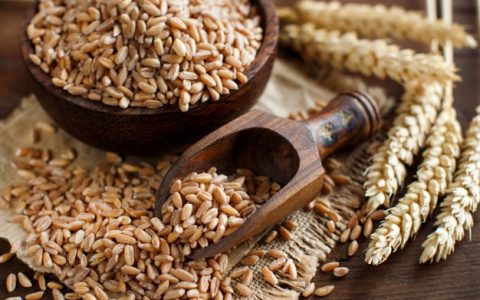
Farro
Farro is an ancient wheat-based grain that has become increasingly popular.
Per 3.5 ounces (100 grams), uncooked emmer farro packs
- Calories: 362
- Carbs: 72 grams
- Protein: 13 grams
- Fat: 2 grams
- Fiber: 11 grams — 42% of the DV
- Niacin (vitamin B3): 53% of the DV
- Zinc: 44% of the DV
- Magnesium: 31% of the DV
Aside from the nutrients listed above, farro is high in antioxidants like polyphenols, carotenoids, and phytosterols, which may lower your risk of several chronic illnesses, such as heart disease and certain cancers.
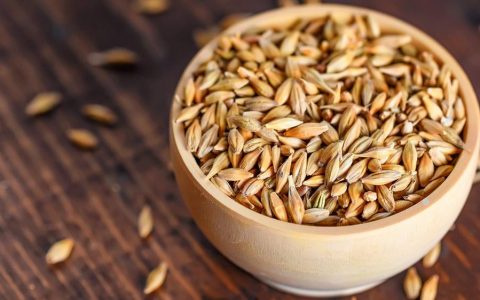
Barley
Barley is highly nutritious and among the most widely consumed ancient grains in the American diet.
One cup (157 grams) of cooked barley provides
- Calories: 193
- Carbs: 44 grams
- Protein: 4 grams
- Fat: 1 gram
- Fiber: 6 grams — 24% of the DV
- Selenium: 25% of the DV
- Iron: 12% of the DV
- Thiamine (vitamin B1): 11% of the DV
Barley is high in beta glucans, a type of soluble fiber that dissolves in water and forms a gel-like substance in your gut. Beta glucans are also linked to heart health.
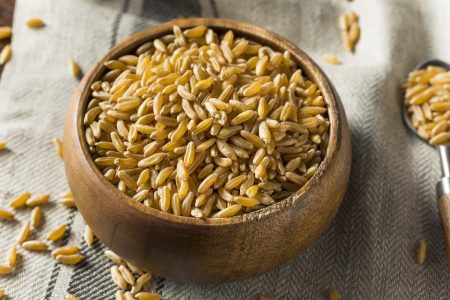
Khorasan wheat (kamut)
Khorasan wheat, also known as kamut, is a high-fiber, nutrient-dense grain that is linked to health benefits.
One cup (172 grams) of cooked kamut offers
- Calories: 227
- Carbs: 48 grams
- Protein: 10 grams
- Fat: 1 gram
- Fiber: 7 grams — 30% of the DV
- Selenium: 100% of the DV
- Zinc: 29% of the DV
- Niacin (vitamin B3): 25% of the DV
Kamut may be especially beneficial for reducing blood sugar levels and heart disease risk factors like LDL (bad) cholesterol.
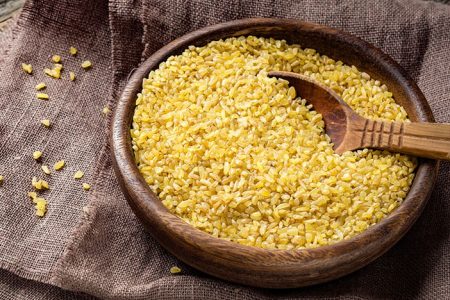
Bulgur (cracked wheat)
Bulgur, also called cracked wheat, is a staple food in Middle Eastern cuisine.
One cup (182 grams) of cooked bulgur offers
- Calories: 151
- Carbs: 34 grams
- Protein: 6 grams
- Fat: 1 gram
- Fiber: 8 grams — 33% of the DV
- Manganese: 48% of the DV
- Copper: 15% of the DV
- Magnesium: 14% of the DV
Bulgur is frequently made from cracked durum wheat and often added to salads like tabbouleh or used in place of rice in dishes like pilaf.
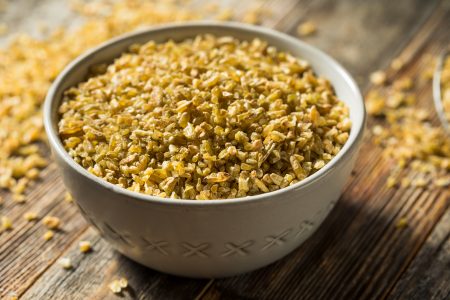
Freekeh
Freekeh is a staple in Middle Eastern cuisine. Made from green durum wheat, it packs a variety of nutrients and powerful carotenoid compounds
Per 3.5 ounces (100 grams), uncooked freekeh offers
- Calories: 325
- Carbs: 65 grams
- Protein: 20 grams
- Fat: 2.5 grams
- Fiber: 10 grams — 40% of the DV
- Iron: 20% of the DV
In particular, freekeh is a good source of the carotenoids lutein and zeaxanthin. A higher intake of these compounds has been linked to a lower risk of degenerative eye disorders, such as cataracts and age-related macular degeneration (AMD).
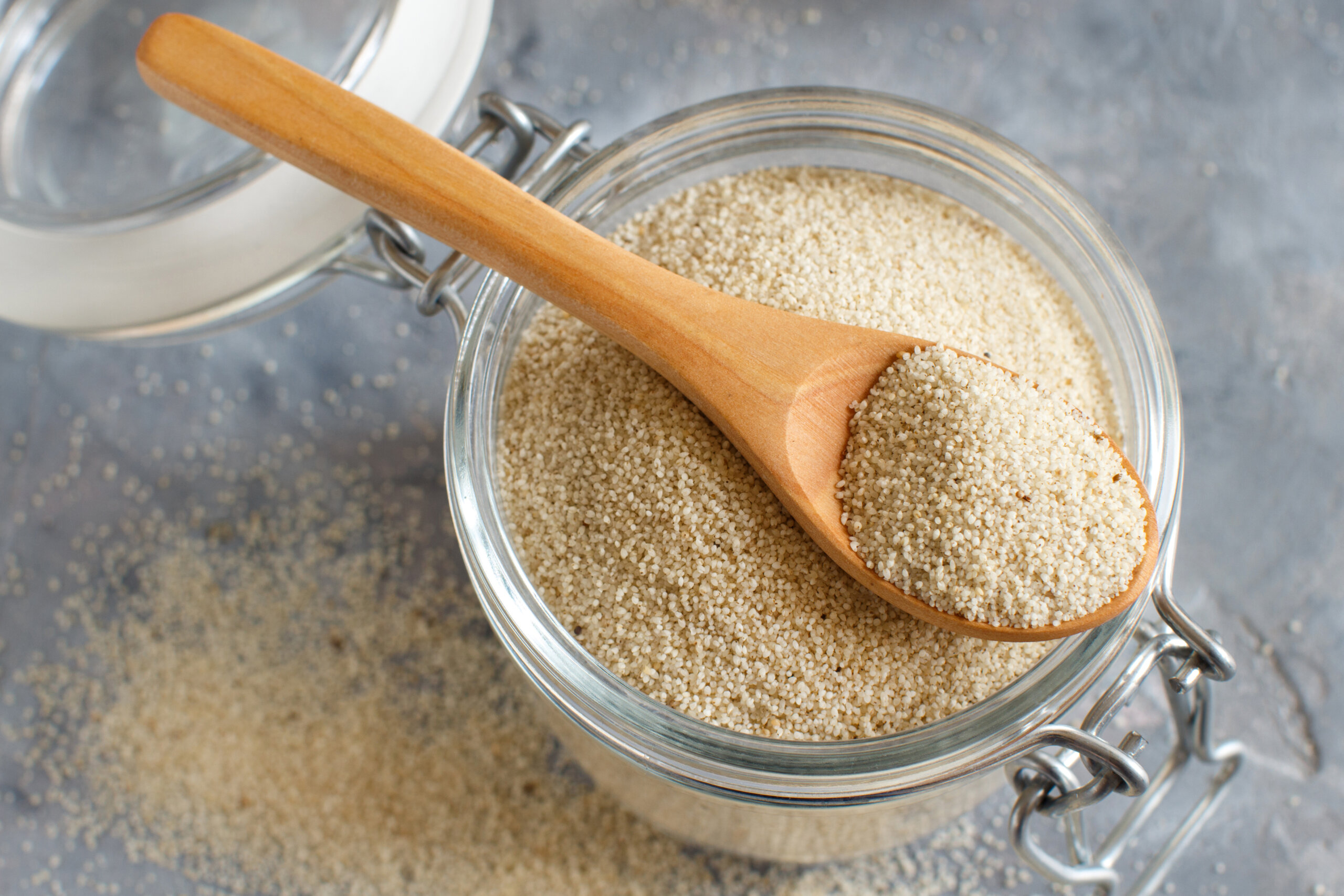
Fonio
Fonio is a type of millet that’s widely consumed in West African countries. The two most common varieties are white fonio (Digitaria exilis) and black fonio (Digitaria iburu).
Per 3.5 ounces (100 grams), uncooked fonio provides
- Calories: 378
- Carbs: 87 grams
- Protein: 4 grams
- Fat: 1 gram
- Fiber: 2 grams — 9% of the DV
- Iron: 9% of the DV
Fonio also boasts good amounts of magnesium, copper, and zinc.
[su_divider top=”no” divider_color=”#726c6d” size=”7″ margin=”5″]
[su_button url=”https://www.facebook.com/tradelinksainternational/?view_public_for=105757601162821″ target=”blank” style=”flat” size=”5″ icon=”icon: facebook-f” text_shadow=”0px 0px 0px #000000″] [/su_button] [su_button url=”https://www.linkedin.com/company/tradelink-sa/?viewAsMember=true” target=”blank” style=”flat” size=”5″ icon=”icon: linkedin” text_shadow=”0px 0px 0px #000000″] [/su_button] [su_button url=”https://www.instagram.com/tradelinknz/” target=”blank” style=”flat” size=”5″ icon=”icon: instagram” text_shadow=”0px 0px 0px #000000″] [/su_button] [su_button url=”https://www.youtube.com/channel/UCewEsyFy0Y_1MdjwhsXvT0w” target=”blank” style=”flat” size=”5″ icon=”icon: youtube” text_shadow=”0px 0px 0px #000000″] [/su_button]
[su_youtube_advanced url=”https://www.youtube.com/watch?v=LCEkNZdMi04″ height=”200″ responsive=”no” fs=”no”]


